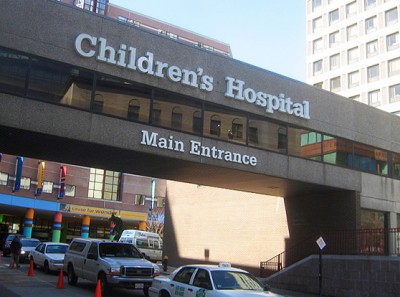
In 2013, anemia, a condition in which one does not have enough healthy red blood cells, resulted in 4,894 deaths, according to statistics from the U.S. Centers for Disease Control and Prevention. More than 41,000 blood donations are needed every day, according to the American Red Cross, so with a significant portion of the population relying on blood transfusions for survival, safe blood transfusions are critical. In an effort to make blood transfusions simpler, Boston Children’s Hospital is at the forefront of pioneering the use of new technology that precisely matches blood donor with blood recipient.
This technology, called PreciseType, is the first blood compatibility molecular assay used in transfusion medicine approved by the U.S. Food and Drug Administration. As Boston Children’s is among the first hospitals in the nation to use PreciseType, most hospitals continue to rely on more traditional methods, such as taking someone’s red blood cells using antibodies to determine what is on another person’s red blood cells, said Steven Sloan, medical director of the blood bank at Boston Children’s.
“The problem [with traditional methods] is the reactions are not that clear, and there’s limited supply for many of these antibodies,” Sloan said.
Boston Children’s objective, he said, is to use technology that enables them to use DNA to determine the antigens on the surface of each person’s red blood cells.
“What this technology does is to extract the DNA from the patients’ white cells, and then it can pretty quickly assay, using the DNA, it can assay many different genes to determine an extended phenotype,” Sloan said. “It is able to tell us in one assay, what would be on the person’s red cell.”
In addition to having an ABO blood type and Rh blood type, various molecules and proteins exist on the surface of red blood cells. These molecules and proteins may prompt an immune response from another person’s red blood cells in the event of a transfusion. As antibodies continue to form, individuals decrease the size of their donor pool, said Matthew Heeney, clinical director of the Blood Disorders program at Dana-Farber/Boston Children’s Cancer and Blood Disorders Center.
“That’s called alloimmunization. I get immunized against your alloantigen, and that means I can never get blood from you again because the blood bank will now identify every time I get tested,” Heeney said.
The new technology, Heeney said, would prove to be very helpful for patients who consistently receive transfusions. In addition to detecting the ABO type and Rh type on the surface of the red blood cell, PreciseType gives a comprehensive and thorough view.
“We also look at all the blood groups and do extended cross matches, but now genetically. Not only are we relying on the little part of the protein, we are able to tell the entire surface of the protein by the DNA sequence,” Heeney said. “It’s expensive, but for people who are getting many transfusions, this is something that would allow them to continue to have a broad donor pool and not run into the all the problems of having multiple alloantibodies.”
The PreciseType method also minimizes incorrect matching of blood donor with blood recipient, which can have dire consequences, Sloan said.
“You can be transfused and immediately destroy those transfused blood cells, and that can cause a whole wide range of symptoms, including kidney failure, problems with blood clotting, and it can cause shock and death,” Sloan said. “Although it is rare for this to actually kill somebody, it may actually happen.”
In the coming months, Boston Children’s Hospital will introduce another new technology for blood transfusions, Sloan said.
“The hospital will be soon implementing the system where that match is an electronic system. There is a barcode on the patient’s wristband and a similar code on the DNA of the blood, and those will be scanned to match to make sure people are getting the blood they are supposed to be getting.”
As developments continue to be made in safer and more efficient blood transfusions, research plays a critical role in informing those who work directly with patients. A study published March 17 in the New England Journal of Medicine found that the age of red blood cells did not have an impact on patients’ health outcomes, contrary to what the researchers found in 18 observational studies. Similarly, a study that many hospitals in Boston participated in that was presented in abstract form found that the age of transfused red blood cells do not matter clinically in cardiac surgery patients, Sloan said. That study has yet to be published.
Aided with research and technology, blood transfusions have a promising future, Heeney said.
“People are now trying to create sources of blood components without needing a donor at all, trying to create a bioreactor,” he said. “There are exciting things.”
With developments on the horizon such as manufacturing hemoglobin, a protein molecule in red blood cells that transports oxygen from the lungs, blood supply could better meet blood demand.
“Blood is our most precious resource,” Heeney said. “It is not a drug we can manufacture.”

















































































































